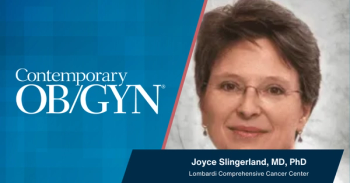
Cardiovascular disease and risk of early menopause
New research examines whether women who experience a heart attack, stroke or other type of cardiovascular event before age 35 have a higher risk of early menopause.
Women who experience a heart attack, stroke or some other type of cardiovascular event before age 35 have twice the risk of early menopause, according to a pooled
“To the best of our knowledge, this is the first study to test the association between premenopausal cardiovascular disease (CVD) and timing of natural menopause using large-scale data,” said lead author Doungshan Zhu, MD, from
Dr. Zhu told Contemporary OB/GYN that previous studies have linked women with early menopause to an increased risk of CVD. “However, no study has examined the converse model; for example, whether premenopausal CVD events such as cardiovascular damage are connected to reproductive aging and early onset of menopause,” he said.
CVD events for the study were ascertained by self-report or/and hospital diagnosis, and were defined as the first occurrence of coronary heart disease (CHD), including heart attack and angina, or stroke, including ischemic and haemorrhagic strokes. CVD events were analysed both as a composite event and for CHD and stroke separately.
Altogether, 1,561 (0.9%) premenopausal participants reported CVD events, including 1,130 CHD and 469 strokes, at a mean age of 41.3 years. Compared with women without any premenopausal CVD events, women who experienced a first CVD event before age 35 were at twofold risk of menopause before age 45 (early menopause).
Compared with women without any premenopausal CVD events, women who experienced a first premenopausal CVD event before age 35 years were at twofold risk of menopause before age 45 years (early menopause). For any premenopausal CVD before age 35 years (either CHD or stroke), the adjusted relative risk ratio (RRR) for early menopause was 1.92 (95% confidence interval [CI]: 1.17 to 3.14); for CHD, 2.17 (95% CI: 1.01 to 3.43) and for stroke, 2.17 (95% C1: 1.43 to 3.30). Conversely, women who experienced a first premenopausal CVD event after age 40 started natural menopause at the expected age of around 51 years.
“The genetic regions associated with premature or early-onset menopause may tie to the occurrence of CVD,” Dr. Zhu said. “Thus, our observation of a significant association between ‘very young CVD’ and early menopause may arise due to shared genetic factors. That is to say, these shared genetic regions predispose the relationship between early CVD and early age at menopause.”
There is also a connection between genetic and environmental factors, according to Dr. Zhu. “Smoking, for example, is common in those who experience very young CVD events and is also associated with early menopause,” he said. Coronary disease occurring at a young age may also have a long-term adverse influence on vasculature. “The damages in large blood vessels may affect the vasculature in the ovarian system and accelerate ovarian aging and therefore lead to early menopause,” Dr. Zhu noted.
Due to the limited number of cases reviewed, the investigators were unable to perform subgroup analysis of subtypes of CHD (angina and heart attack) or stroke (ischemic and hemorrhagic) and age at menopause. “The associations between different subtypes of CHD or stroke with age at menopause may differ, due to their dissimilar biological mechanisms,” Dr. Zhu said. Furthermore, because the majority of women were white, results may need to be verified in other race/ethnicities.
“Meanwhile, women with premenopausal CVD should be alerted by their physician that they have a high possibility of early menopause, because early menopause is associated with a higher risk of death, type 2 diabetes and osteoporosis,” Dr. Zhu said.
Additional studies might examine whether genetic factors tie early-onset menopause to the occurrence of CVD or whether environmental factors such as smoking also play a role.
Disclosures:
Dr. Zhu reports no relevant financial disclosures.
Newsletter
Get the latest clinical updates, case studies, and expert commentary in obstetric and gynecologic care. Sign up now to stay informed.




